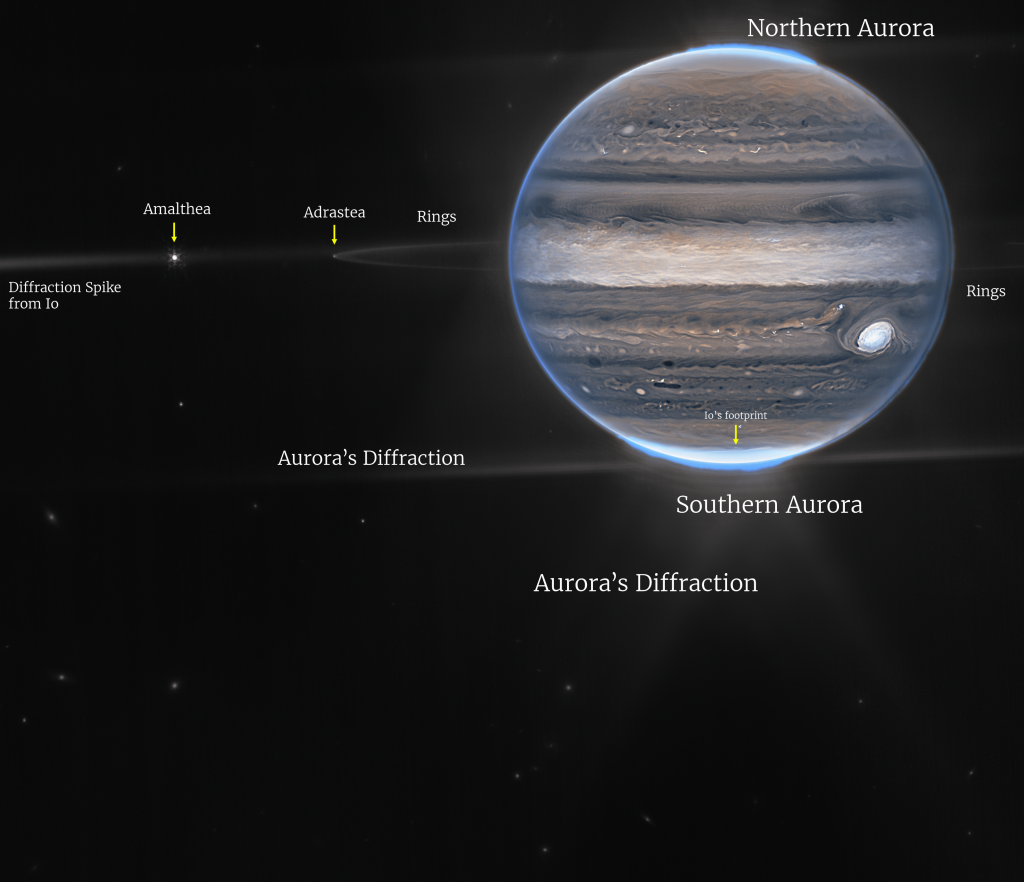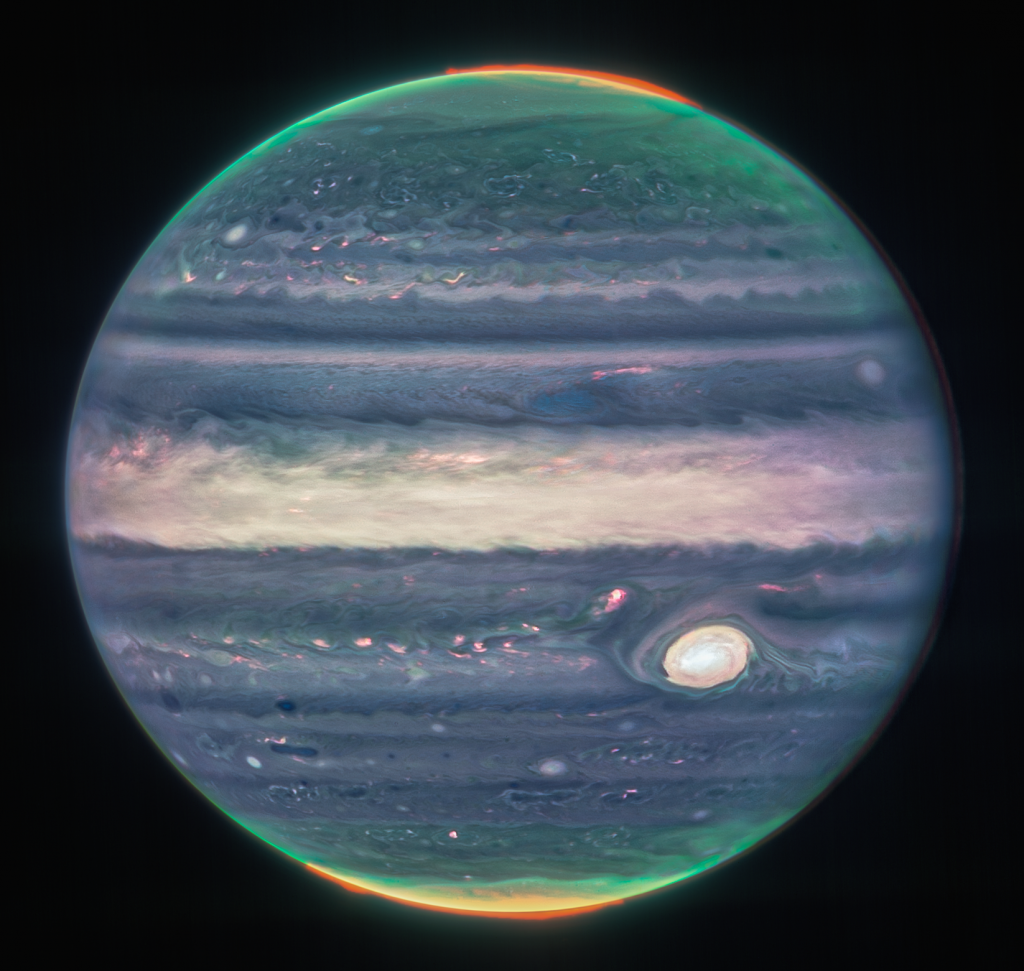James Webb Opening Up the Universe to Closer Scrutiny
"We've never seen Jupiter like this. It's all quite incredible.""We hadn't really expected it to be this good, to be honest.""It's really remarkable that we can see details on Jupiter together with its rings, tiny satellites, and even galaxies in one image."Imke de Pater, astronomer, professor emerita, University of California at Berkley"This one image sums up the science of our Jupiter system program, which studies the dynamics and chemistry of Jupiter itself."Thierry Fouchet, astronomer, professor, Paris Observatory
 |
| Webb NIRCam composite image from two filters – F212N (orange) and F335M (cyan) – of Jupiter system, unlabeled (top) and labeled (bottom). Credit: NASA, ESA, CSA, Jupiter ERS Team; image processing by Ricardo Hueso (UPV/EHU) and Judy Schmidt. |
Photographs taken in July by NASA's James Webb Space Telescope and recently released identifies Jupiter in all its glory, the photographs labled "giant news from a giant planet", by NASA The largest planet in our solar system, Jupiter is fifth in line from the sun, over two times larger than all other planets combined. If Earth can be imagined as having the size of a grape, Jupiter would assume the size of a basketball, explained NASA.
The newly-released Webb telescope photographs record in close detail giant storms on Jupiter -- as well as auroras and faint rings in detail. Both Drs. Pater and Fouchet led the observations of the giant planet, part of an international collaboration.
Named for James E. Webb, chief of the then-fledgling U.S. space agency from 1951 to 1958, the $10 billion telescope represents his legacy to the world of astronomy. An international collaboration led by NASA, along with the European Space Agency and the Canadian Space Agency, launched in 2021. The first set of full-colour images and data courtesy of the revolutionary telescope was released in July, revelations of a glittering cosmic theatre of colliding galaxies and a dying star.
More recently released photographs of Jupiter represent composites from several Webb images, shot by the telescope's Near-Infrared Camera with its infrared filters showcasing details of the planet. The images were artificially coloured to translate them into the visible spectrum, making Jupiter's features stand out because infrared light is invisible to the human eye.
Jupiter, unlike most other planets in our galaxy, is comprised of gas, mostly hydrogen and helium; basic ingredients of a star, which Jupiter never grew sufficiently massively to become. Unlike Saturn's rings Jupiter's are fainter and comprised of space dust, and not ice. A wide-field view of the new images show faint rings and two tiny moons around Jupiter.
A day on Jupiter is comprised of about ten hours, and there are at least 50 moons. Io, Europa, Ganymede and Callisto were first observed by Italian physicist Galileo Galilei in the year 1610; Jupiter's four largest moons. Jupiter's Great Red Spot appears white in the photographs, a storm larger than Earth, raging over the planet for centuries.
 |
| Webb NIRCam composite image of Jupiter from three filters – F360M (red), F212N (yellow-green), and F150W2 (cyan) – and alignment due to the planet’s rotation. Credit: NASA, ESA, CSA, Jupiter ERS Team; image processing by Judy Schmidt. |
Labels: Infra-red Photography, James Webb Telescope, Jupiter, NASA

0 Comments:
Post a Comment
<< Home